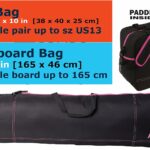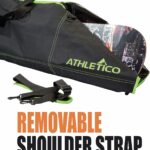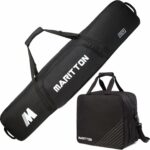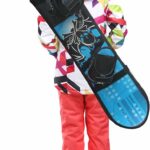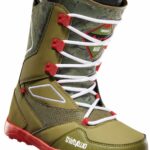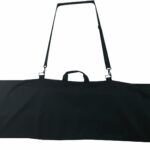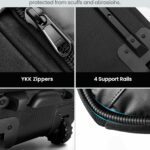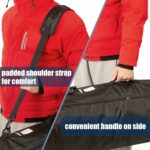You might be wondering, “Do all snowboard bindings fit all boards?” As you gear up for your next snowboarding adventure, it’s essential that every piece of equipment functions correctly to ensure a smooth ride. This article sheds light on whether or not all snowboard bindings are compatible with all snowboard types. It dissects the nuances between different snowboard bindings and boards, helping you make informed decisions that could potentially save your day in the snowy slopes. Get ready to gain some important snowboarding knowledge!
The Basics of Snowboard Bindings
Snowboarding, like any sport, requires specific equipment to make the best out of your experience on the slopes. One of the essentials of this winter sport is the snowboard bindings. But what are these exactly?
Understanding what snowboard bindings are
Snowboard bindings are a critical component of your snowboarding setup. They are the link between your boots and your snowboard. Acting as a direct connection, they transfer your muscle movements to the snowboard, allowing you to steer it down the terrain. Without them, you’d quite literally slip off your board!
The role bindings play in a snowboarding setup
Snowboard bindings are not just essential for attaching your boots to your snowboard; they also play a significant role in comfort, performance, and safety. The type of binding you choose can influence your ease of movement, control of the board, and even your stance on the slopes. As binding technology has evolved, so have your options, so it’s important you understand the basics before making a purchase.
Different Types of Snowboard Bindings
There are several types of snowboard bindings to choose from, each with its unique characteristics and advantages. Most snowboarders choose between strap-in bindings, rear-entry bindings, and step-in bindings.
Strap-in Bindings
Strap-in bindings are the traditional and most common type. They consist of two straps, one over your ankle, and the other over your toes. These bindings provide excellent control over the board no matter what terrain you’re on.
Rear-entry Bindings
Next up are the rear-entry bindings. These bindings are hinged at the ankle, allowing you to slide your boot in at the back. The highback of the binding then flips up to secure your boot in. While not as prevalent, these bindings are highly valued for their convenience and speed of entry and exit.
Step-in Bindings
The last type is the step-in bindings. These function just as the name suggests – you merely step in, and mechanical components then lock your boots into the bindings. The key advantage of these bindings is convenience since they allow faster entry and exit than the other types. But on the flip side, they require specific boots to fit properly.
Key Characteristics of Snowboard Bindings
While it’s helpful to know the types of snowboard bindings, understanding key characteristics like flexibility, boot compatibility, and adjustability will help you make a more informed choice.
Flexibility of bindings
Binding flexibility is crucial because it affects how the snowboard responds to your movements. A soft-flex binding allows easy, smooth, surf-style riding, while hard-flex bindings are preferred by high-speed, precise carvers.
Compatibility with boots
Another critical factor is the compatibility of your bindings with your boots. Bindings and boots should have a snug fit without causing discomfort or hindering mobility.
Adjustability of bindings
Most snowboard bindings offer some form of adjustability – you should be able to adjust the bindings’ angles, height, position and strap lengths. If a binding doesn’t offer these basic adjustments, think twice before purchasing.
Board-Binding Compatibility: The Truth
Determining if all snowboard bindings fit all boards
So, you might now be thinking, “Do all snowboard bindings fit all boards?” The short answer is, not always. While most bindings are designed to fit a majority of snowboards, incompatibilities can still occur due to different hole patterns and mounting systems.
Role of the board size in compatibility
Board size plays a significant role in compatibility. For example, the width of your snowboard must match your binding size to ensure proper responsiveness and control.
How boot size impacts compatibility
Similarly, boot size impacts compatibility too. The size of your boots should dictate the size of your bindings. Failure to match these components properly can not only result in poor performance but also potential accidents.
Standard Hole Patterns for Snowboards
Understanding hole patterns in snowboards is crucial to ensure compatibility with your bindings.
Understanding what hole patterns are
Hole patterns refer to the holes in the snowboard where you attach your bindings. The arrangement and number of these holes can vary, dictating what type of bindings you can use.
Types of hole patterns present in snowboards
Most snowboards feature one of two primary hole patterns: the standard 4-hole pattern and the Burton 3-hole pattern. Knowing the type of hole pattern your board has is an essential first step in choosing compatible bindings.
Types of Mounting Systems for Bindings
Different brands may use different mounting systems for bindings. Here are some common ones:
Traditional 4-hole system
The traditional 4-hole system is the most common binding mounting system used today. It’s compatible with most non-Burton boards.
Burton 3D system
The Burton 3D system uses a three-hole pattern in triangular configuration. Bindings made for the 3D system can usually be converted to fit standard 4-hole pattern boards, but not vice versa.
Burton Channel system
The Burton Channel system is unique because it uses two channels running longitudinally down the board instead of fixed hole patterns. This provides infinite adjustability for stance width and angles.
The Importance of Matching the Right Bindings to Your Board
How the right bindings affect your performance
Matching compatible bindings to your board is key to optimizing your performance. Right bindings give you better control over your board, reduce leg fatigue, and offer a smoother ride.
Implications of mismatching bindings and boards
Mismatching bindings and boards can create a host of problems. You could reduce your control, stability, and safety, resulting in a less than enjoyable snowboarding experience.
Manufacturer’s Recommendations
Role of manufacturer’s recommendations in determining compatibility
Manufacturers often provide compatibility charts or guidelines to help you make the best choice. Always refer to these recommendations when choosing bindings for your board.
Common brands and their recommended compatibility
Different brands have different fit and compatibility guides. For instance, Burton bindings will usually work best with Burton boards due to their unique mounting systems. But, brands like Union or Rome offer universal discs that fit multiple hole patterns.
How to Choose the Right Bindings for your Snowboard
Factors to consider
Choosing the right bindings involves considering several factors like riding style, boot size, binding size, flex preference, and of course, compatibility with your board.
Learning about the compatibility of different brands
Spend some time researching the compatibility of different brands. Some brands, like mentioned earlier, have universal compatibility, while others are proprietary.
Understanding your snowboarding needs
Lastly, understand your snowboarding needs. Are you a beginner, or are you an experienced rider looking for precisely tuned performance? Your experience level and riding style should influence your choice of bindings.
Conclusion: Do All Snowboard Bindings Fit All Boards?
Debunking the myth
So, do all snowboard bindings fit all boards? No, they don’t. But with so many options available, you’re bound to find a match for your specific board.
The reality of snowboard-binding compatibility
The reality is that compatibility relies on several factors, including the brand and type of your bindings, the hole pattern and mounting system of your board, and of course, the size of your boots. A little research and attention to detail will go a long way in ensuring you have the right setup for an awesome day on the slopes.
- What Snowboard Bindings Should I Get? - January 23, 2024
- What Size Screws For Snowboard Bindings? - January 23, 2024
- How To Snowmobile On Water? - January 23, 2024

